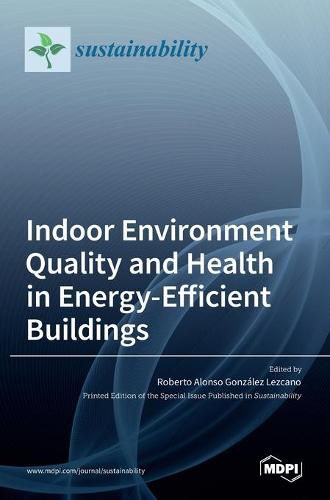Readings Newsletter
Become a Readings Member to make your shopping experience even easier.
Sign in or sign up for free!
You’re not far away from qualifying for FREE standard shipping within Australia
You’ve qualified for FREE standard shipping within Australia
The cart is loading…






This title is printed to order. This book may have been self-published. If so, we cannot guarantee the quality of the content. In the main most books will have gone through the editing process however some may not. We therefore suggest that you be aware of this before ordering this book. If in doubt check either the author or publisher’s details as we are unable to accept any returns unless they are faulty. Please contact us if you have any questions.
This Special Issue addresses a topic that is of great relevance as, nowadays, in developed countries, individuals spend most of their time indoors and, depending on each person, the presence at home ranges between 60% and 90% of the day, with 30% of that time spent sleeping. Considering these data, indoor residential environments have a direct influence on human health, especially considering that, in developing countries, significant levels of indoor pollution make housing unsafe, having an impact on the health of inhabitants. Therefore, housing is a key health factor for people all over the world, and various parameters, such as air quality, ventilation, hygrothermal comfort, lighting, physical environment, and building efficiency, can contribute to healthy architecture, as well as to the conditions that can result from the poor application of these parameters. The articles in this Special Issue thus address issues concerning indoor environmental quality (IEQ), which is described, more simply, as the conditions inside a building. This includes air quality, but also access to daylight and views, pleasant acoustic conditions, and occupant control over lighting and thermal comfort. IEQ also includes the functional aspects of the space, such as whether the layout provides easy access to tools and people when needed and whether there is sufficient space for the occupants. Building managers and operators can increase building occupant satisfaction by considering all aspects of IEQ rather than focusing on temperature or air quality alone.
$9.00 standard shipping within Australia
FREE standard shipping within Australia for orders over $100.00
Express & International shipping calculated at checkout
This title is printed to order. This book may have been self-published. If so, we cannot guarantee the quality of the content. In the main most books will have gone through the editing process however some may not. We therefore suggest that you be aware of this before ordering this book. If in doubt check either the author or publisher’s details as we are unable to accept any returns unless they are faulty. Please contact us if you have any questions.
This Special Issue addresses a topic that is of great relevance as, nowadays, in developed countries, individuals spend most of their time indoors and, depending on each person, the presence at home ranges between 60% and 90% of the day, with 30% of that time spent sleeping. Considering these data, indoor residential environments have a direct influence on human health, especially considering that, in developing countries, significant levels of indoor pollution make housing unsafe, having an impact on the health of inhabitants. Therefore, housing is a key health factor for people all over the world, and various parameters, such as air quality, ventilation, hygrothermal comfort, lighting, physical environment, and building efficiency, can contribute to healthy architecture, as well as to the conditions that can result from the poor application of these parameters. The articles in this Special Issue thus address issues concerning indoor environmental quality (IEQ), which is described, more simply, as the conditions inside a building. This includes air quality, but also access to daylight and views, pleasant acoustic conditions, and occupant control over lighting and thermal comfort. IEQ also includes the functional aspects of the space, such as whether the layout provides easy access to tools and people when needed and whether there is sufficient space for the occupants. Building managers and operators can increase building occupant satisfaction by considering all aspects of IEQ rather than focusing on temperature or air quality alone.